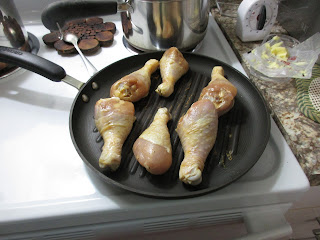Week 3: The United States & Canada
(Source: Britannica.com)
Neither the United States, nor Canada shows up on my DNA tests, of course, as I have no Native blood in me, but these are the countries of origin for my parents and grandparents, so I thought it was appropriate to include them in this project. And it wasn't as easy as you'd think, to find foods for these two countries that aren't too "done" by other countries that will be featured in this project.
Canada's recipe was very easy to decide on. It's one I've heard of a lot over the years but just never tried. And for once, I actually had a recipe card to test out, which means I can share the recipe here!
I have had this recipe in my collection forever, but for some reason, have never tried it. It's old enough that I don't know the source, so I can share it here. Just know, I didn't invent this recipe! This is called a Tourtiere, or Pork Pie.
1lb. ground pork
1tsp. salt
1/2 tsp. pepper
1/4 tsp. nutmeg
1/8 tsp. mace(this is really hard to find and very expensive. It's part of the nutmeg plant, so if you don't have any on hand, don't go out of your way to get it, just use a smidge extra nutmeg and it'll be fine.)
2 tsp. cornstarch
Pastry for 2-crust 8" pie(I used store bought, and it worked just fine)
Combine all ingredients, except pastry, with 1 cup water. Blend thoroughly.
Simmer, uncovered, stirring frequently, 30 minutes.Line an 8" pie pan with pastry, pour in meat mixture.
Cover with remaining pastry. Press edges together and prick with a fork to allow steam to escape during baking. Bake in a 425 degree oven for 10 minutes before reducing temperature to 350 degrees. Bake 35 minutes longer or until top is brown. Serve hot. Makes 6 servings.
Here you can see the three distinct layers on the plate as I get ready to taste it. It actually has a great flavor and if you like pineapple, you'll enjoy this for sure. The cranberry sort of just melts into the jell-o so you don't feel like you're eating cranberries at all.
I found this incredibly sweet and was unable to finish my serving. I haven't eaten jell-o in so long I honestly can't remember when I had it last, so I had my sister taste it for me. She assured me it wasn't overly sweet, if anything it was less sweet than normal jell-o, so if jell-o's your thing, definitely give this one a try!
I had fun making these two recipes today. After last week's disaster, I really needed a win! I think I got it, and now I'm feeling very happy about this and ready for next week! Happy cooking!



































